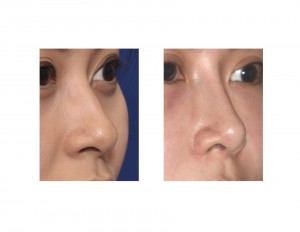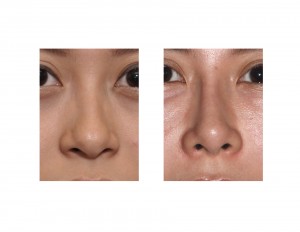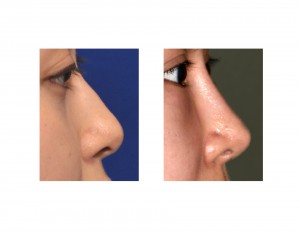Background: Rhinoplasty surgeries fundamentally fall into the three main types, reductive, rehaping and augmentative. A reductive rhinoplasty is where bone and cartilage tissues are removed and none are added and the overall goal is to make the entire nose smaller. A reshaping rhinoplasty is where most of the manipulations are done by suturing and small amounts of tissue removal and grafting are done but the overall size of the nose remains the same. An augmentative rhinoplasty is where the entire nose is built up with the goal of an overall larger or more prominent nasal shape seen.
The augmentation rhinoplasty is often done in certain ethnic noses such as Asian and African-American patients. When building up the nose along the bridge, also called the nasal dorsum, the debate is almost always between using a rib graft harvested from the patient or using an implant out of a box. This is an historic debate and one in which surgeons often are staunch advocates of either approach. The reality is that the use of rib grafts and implants in the nose both have their advantages and disadvantages and the patient should be educated on both dorsal augmentation options.

Case Study: This 22 year-old Asian female was undergoing a variety of facial reshaping procedures including that of the nose. She wanted her nose built up with more dorsal height and tip projection. The options of using a rib graft or a synthetic nasal implant for her dorsal augmentation were thoroughly discussed.


Highlights:
- A dorsal nasal implant offers a synthetic alternative to the use of rib grafts in rhinoplasty.
- Different styles of dorsal nasal implants exist which are fundamentally different based in their width and height.
- Dorsal nasal implants are often part of an overall augmentation rhinoplasty done through an open approach.
Dr. Barry Eppley
Indianapolis, Indiana




